This is where we get to the nitty-gritty of cow-calf dairying, looking at creating a bond and the first milking; but it’s important that you have understood the whole series so far (see right or click here) before reading on, as much of what is covered here relates to points made before.
BEFORE PROCEEDING: Please note that there are no hard and fast rules to adhere to and you should always use your common sense, intuition, vet’s guidance and any other source that you feel appropriate to ensure your cows and calves get the best care.
There are just two firm points I would make: never lose control of your temper when dealing with any animal, and never leave a calf on its own.
As humans we have an almost unique ability to understand that our actions have consequences, and to foresee the outcome of an action or any given situation, in a way that a cow or calf can’t. So you will always have the advantage; use it wisely and always with low-stress livestock handling techniques. If in doubt, just ask yourself: at the end of today, will my cow still like me?!
Background
I bought my first two house cows (Marmite and Marmalade) in 2006 from a commercial herd. Boy, was I naïve! Not coming from a farming background, it never even occurred to me that dairy calves were routinely removed from their dams. Marmite was dry, but due soon, Marmalade in milk. I milked Marmalade by hand (and soon realised that I should have considered larger teat size when choosing a cow for hand milking!) and Marmite duly calved a couple of months after they arrived at Smiling Tree.
Both cows were 10 years old and neither had kept a calf before. Marmite took to motherhood like a duck to water, and was in no doubt that her milk was for her calf, not me. So she soon became a suckler cow as I preferred my arms, legs and head in one piece!
I fared better when Marmalade calved later in the year and had by then bought a milking machine. She was happy to give milk to both me and her calf, but her calf grew so rapidly that by the time it was 8 weeks old, Marmalade’s udder was invariably almost empty when I brought her into the parlour each morning.
Soon I bought Lollipop as a young heifer. She is my lovely old girl and still going strong today. Her first calf was sadly born dead but that meant that Lollipop showed me how amazing it is to have a wonderful cow, who never moves in the parlour, gives you all her milk and loves her cuddles!
In the intervening years I’ve bought more cows, bred more calves, sold some, eaten some (the boys!) and tried various different practices for calf-at-foot dairying with greater and lesser degrees of success. All the while, I’ve been looking for sources of knowledge and inspiration on how to do it best, only to find that, unfortunately, they are few and far between. So for the most part it’s been trial and error and instinct, whilst always aiming to put the health and welfare of the cows and calves first.
In my youth, I spent 10 years working with horses, mares and foals, young thoroughbred race-horses, ‘breaking’ (still hate that word) and training them. So I’d had lots of experience in working with animals and knew the benefits of low-stress handling techniques, use of body language and, going back over 30 years now, was always a huge fan of Monty Roberts, the original ‘horse whisperer’.
What I am sharing with you here is the coalescence of all those experiences and inputs, including what I have recently learned from keeping an original population Traditional Hereford beef suckler herd, and observing their more natural herd dynamics. And, of course, I go on learning every day and always welcome input, ideas and constructive discussion. So please feel free to contact me about anything you read here.
So here it is, seatbelts on…
Cow-calf dairying; how to do it
First up, remember every cow is different. I still treat each cow and calf as individuals and tweak what I do according to their needs and comfort. Having said that, this spring I trained three freshly calved heifers to milk using the techniques explained here, and all three were a dream.
If you know your cow well, you’ll know if she’s happy or not, but a great test is if she shows her discontent by pooing in the milking parlour. It was a month before one of these three heifers pooed, another month before another one did and, still as I type, the third heifer has never pooed or peed in the parlour and none have lifted a foot while being milked – success!
I’ve broken my technique into 7 steps: bonding; calving and first milking; long-duration suckling and second milking; subsequent milkings; milking without the calf suckling; parting in the field; and weaning.
Step 1: creating a bond
Creating a positive bond with your cow long before she is due to calve pays huge dividends. You are going to be up close and personal with her every day once she calves, so she needs to be totally comfortable in your presence.
A simple way to do this is to just spend some time with her each day. You don’t need to catch her or pen her, just be with her, talk to her, and if she allows it, give her a nice scratch under the chin and along her back.
Coming from a house-cow owning background, I always go one step further and halter train all my cows and calves. Halter training is not that hard, but that’s another blog!
Nearer to her calving date, introduce your cow to the sound of the milking machine and the place where she will be milked. Take her in and out of the milking parlour each day and give her a treat (a handful of grass or lucerne nuts or some cut-up apple) so she learns it’s a positive place to be.
Step 2: calving / first milking
I aim for my cows to calve in a pen next to the milking parlour but if they’ve calved outside, I bring them into the pen when I can. I leave the cow to bond with her calf for a minimum of 24hrs before the first milking but during that time I go in to see her and start to bond with them both myself. Make sure the calf has suckled and, all being well, the cow should have cleansed (passed the afterbirth) in that time too.
Let’s assume you have a strong healthy calf that has drunk plenty of colostrum – a minimum of 300 sucks – so I was told by David Finlay of Cream o’ Galloway, who also runs a cow-calf dairy. And yes, count them, it’s easier than you think! Then, depending on the time of day the calf is born, I milk for the first time on the morning after that first 24hrs.
I always milk in the morning, once-a-day. Cows are such creatures of habit that settling them into the daily routine right at the start helps keep them calm and content.
All my girls learn from an early age to be led and tied up with a rope halter and this makes milking so much easier. When training a heifer to milk, I take my portable single bale milking machine into her pen, give her some food and tie her up so that I can milk her for the first time in a place she feels safe and secure.
I put the calf up next to her head, so she can see him while she eats (bear in mind that I have 100% grass-fed cows, so getting ‘feed’ is a huge treat for them and they eagerly put their heads down to eat a few organic lucerne nuts). I can then carefully wash her udder and attach the cluster without much hassle. I just take enough colostrum off to ease the pressure on her udder, so that it is a little softer. I’m not trying to milk her out at this point, just trying to make her comfortable and give her a positive first association with that strange noisy sucky thing attached to her teats!
In our next post we look at share-milking with the calf.

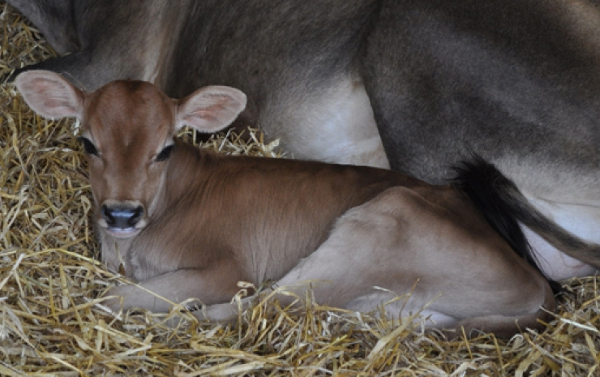
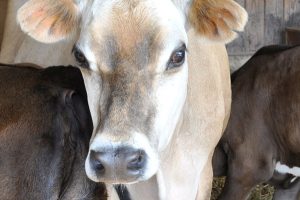
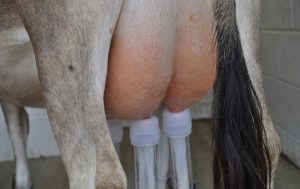
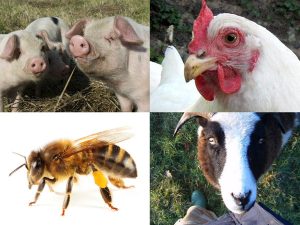
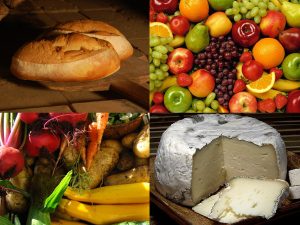
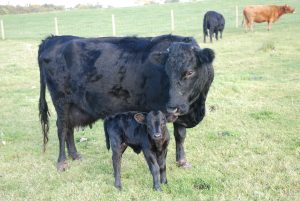
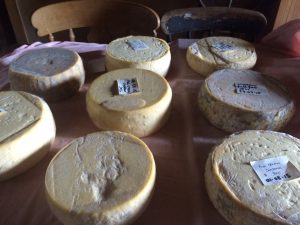
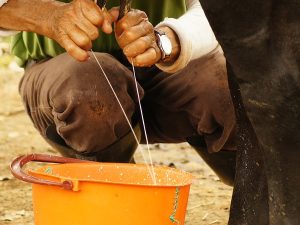
1 Comment
Thank you so much for posting with such detail! I am starting a small raw milk dairy, and this is helping me structure my calving and rearing practices!!! A truly invaluable resource!